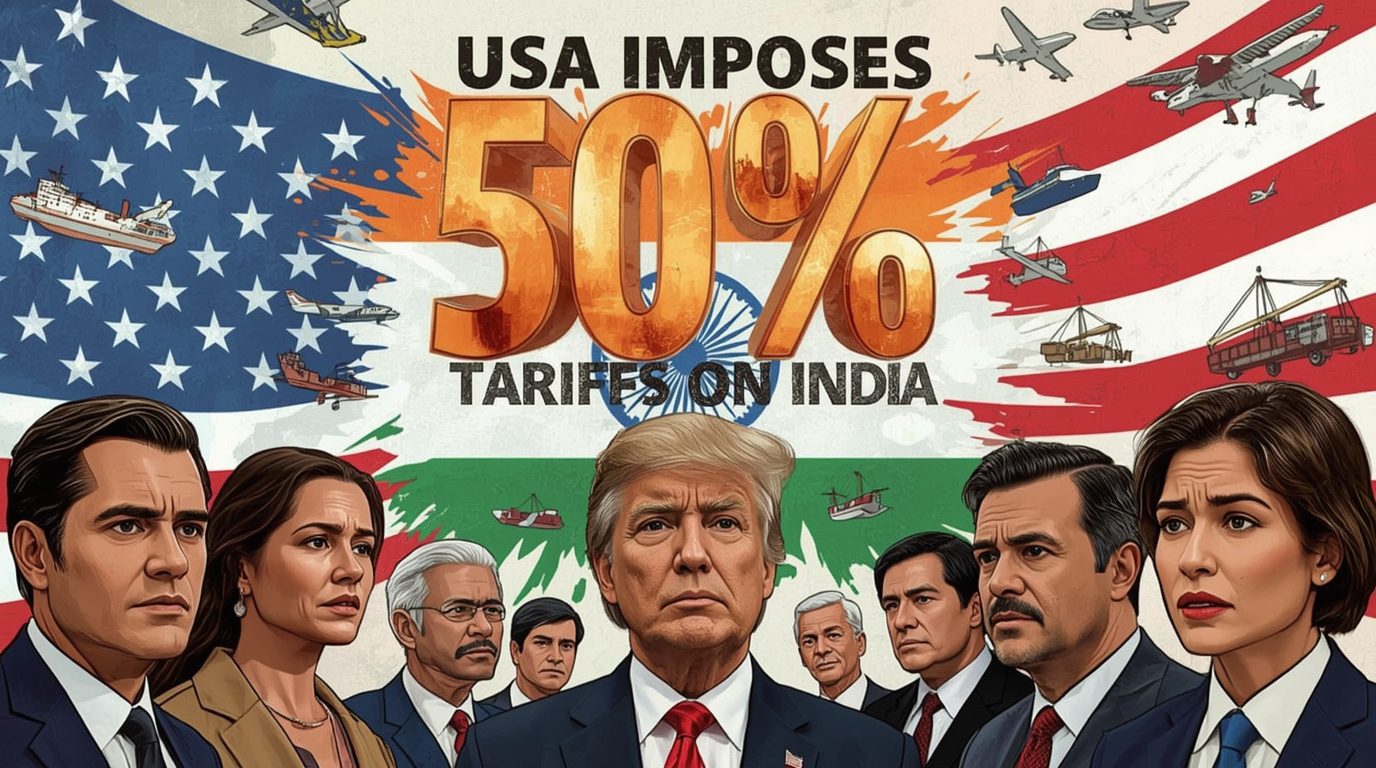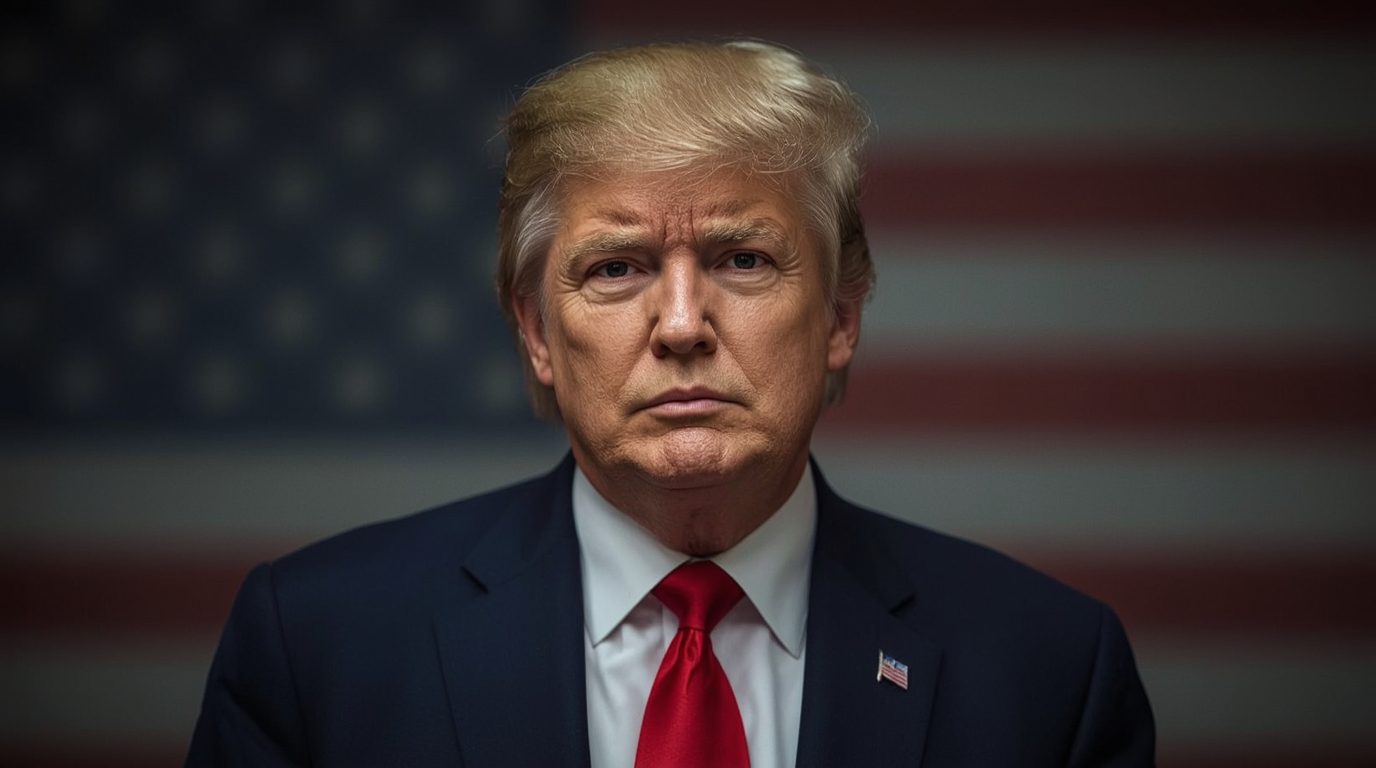How 50% Tariffs Bomb Will Dilute India’s Competitive Advantage – A Sector-wise Comparison
NEW DELHI, Aug 27 – India’s trade juggernaut has been faced with some of the stiffest challenges in recent years, ever since the United States slapped a 50% tariff on Indian exports, effective immediately. Considered a “tariff bomb” by analysts, the new policy will significantly undermine India’s price competitiveness in the US market, where it has been reaping a trade surplus for decades.
As per a new SBI Research report, nearly $45 billion worth of Indian exports stand to be directly impacted by the new duties. Tariffs aside, there is a greater concern regarding the disproportionate treatment in comparison with India’s competitors.
“Amid higher tariffs, India’s products might lose competitiveness. This could benefit countries like China and Vietnam, who do enjoy lower tariffs compared to India, to a greater degree. China faces a 30% tariff, Vietnam 20%, Indonesia 19% and even Japan has 15%,” the report noted.
The consequences will likely be felt by a range of industries that form the backbone of India’s export economy, such as textiles, apparel, gems, jewelry, and even seafood.
India’s Export-Driven Growth Story at Risk
India has, for many years, enjoyed a trade surplus with the United States, meaning that India exports more to the US than it imports from the US. The United States remains the single most important country for Indian exports, constituting close to seventeen percent of India’s total exports.
India exported goods worth USD 77.5 billion to the United States while importing goods worth USD 42.9 billion at the start of FY24, yielding a surplus of USD 34.6 billion. Since, SBI has warned that the forecasted 34.6 billion surplus could be whittled down significantly by the forecasted increase of tariffs on US imports.
SBI was quoted in saying, “If 45 billion dollars worth of exports are affected due to 50 percent tariffs, then in the worst case scenario India trade surplus will turn to trade deficit.”
Textiles and Apparel: The Hardest Hit
Textiles are set to face the largest impact and bear the largest brunt.
India has emerged as the fifth largest exporter of textiles and apparel to the US, after overtaking Bangladesh in certain categories in 2023. The sector contributes 2.3 percent to India’s GDP and provides more than 45 million jobs. It is one of the most labor-intensive industries in the economy.
Textile tariffs will be impacted the most by the following predetermined increases:
- Textile tariffs: 59 percent
- Knitted apparel: 63.9 percent
- Non knitted apparel: 60.3 percent
In stark comparison, competitor countries face markedly more favorable tariffs; China (30%), Vietnam (20%), Indonesia (19%) and even Bangladesh, which is heavily reliant on garment exports, only faces 18%.
The calculations for US customers are straightforward. An Indian cotton shirt is priced at $10 and a Vietnamese one at $11, but after tariffs, India’s shirt is $16 and Vietnam’s is $13.20. The cost difference is significant enough to shift purchases.
Order cancellations and postponed shipments are already being reported from textile hubs like Tiruppur (Tamil Nadu), Surat (Gujarat), and Ludhiana (Punjab).
“Margins are razor-thin in this industry,” said Rahul Mehta, honorary president of the Clothing Manufacturers Association of India (CMAI). “A 50% tariff is not something we can absorb. Buyers will simply move to Vietnam or Indonesia.”
Gems and Jewelry: An Industry Under Strain
Polished diamonds, gold jewelry, and studded ornaments are a part of India’s gems and jewelry industry which is valued at $28.5 billion and exports around a third to the United States. India also imports the most amount of jewelry and gems.
The tariff increase of 25% to 50% imposed on the industry puts Indian exporters at a significant disadvantage, as they are already struggling to compete domestically with rising inflation.
India: 50%
Switzerland (top supplier to the U.S.): 39%
Canada: 35%
“This will sting,” comments Vipul Shah, chairman of the Gem and Jewellery Export Promotion Council (GJEPC). “The U.S. is our single-largest market. We already face challenges from lab-grown diamonds and shifting consumer preferences. A 50% duty is a body blow.”
The diamond cutting and polishing center Surat employs nearly one million people. A sustained drop in demand from the U.S. could result in job losses and wage reductions, endangering many livelihoods.
Seafood: Shrimp Exporters Face a Meltdown
India has emerged as a formidable player in the global seafood market, with shrimp exports leading the charge. The U.S. market is crucial as it consumes more than 50% of India’s shrimp exports.
Under the new system, Indian shrimp comes with a 50% duty. On the other hand,
- Ecuador (4th largest exporter): 15%
- Canada: 35%
- Chile: 10%
India is likely to lose its competitive advantage in this sector. Exporters from Andhra Pradesh and Odisha, which account for 70% of India’s farmed shrimp, are warning of severe losses.
“Imports from the US will shift to Ecuador or other parts of Latin America virtually instantaneously,” observes Visakhapatnam-based seafood exporter Rajiv Gandhi. “This is not merely an issue of trade. It is about farmers, hatcheries, and an entire ecosystem of livelihoods.”
Pharma: The Lone Bright Spot
Despite the gloom, India’s pharmaceutical industry finds relief since it is not affected by the tariffs.
The U.S. healthcare system relies heavily on India for generic medicines, with nearly 40% of the generic medicines consumed in the US. Pharma exports to US stood at 8.3 Billion dollars in FY 24.
Analysts suggest that the US government deliberately excluded India’s pharmaceutical exports from tariffs in order to avert inflation on drugs. India’s healthcare system was responsive to the US healthcare system’s politically charged sensitive nature.
Smartphones, Steel and IT: Relatively Insulated
The U.S. smartphone, auto parts, and steel markets all have India as a relatively minor player. The region has not been a major player in US smartphone supply chains, and steel exports are largely focused on the Middle East and Europe.
The IT services sector, which is a large contributor to India’s revenue from the US, does not bear the brunt of the tariff as it is on goods. Services are not affected, although, in case of an escalation to a trade war, visas and rules on digital trade could be subject to scrutiny.
Impact of Something On The U.S. Economy: A Double Edged Sword
Analysts worry the U.S. economy will also be affected while India braces for losses.
SBI Research believes the tariffs will reduce U.S GDP by 40-50 basis points and increase input-cost inflation.
“Particularly in import-sensitive sectors like electronics, autos, and consumer-durable goods, the U.S. economy is showing signs of renewed inflationary pressure owing to the recent tariffs and weaker dollar,” the report said.
American consumers will have to pay more for things like clothing, jewelry, and shrimp cocktails. To mitigate their losses, major retailers like Walmart, Target, and Macy’s may start to shift their supply chains to Vietnam and Latin America, but this will come with changeover costs.
Deteriorating Diplomatics and The Future
The new tariffs will also increase strain on India-U.S. relations, which have developed in recent years in defense, technology, and climate collaboration.
New Delhi is bound to contest the move, while Washington defends it with their “fair trade” rationale. India’s Ministry of Commerce has already said they will bring the issue to the WTO.
Meanwhile, gentle talks might give hope. SBI Research maintained a cautiously optimistic view, stating,
“Trust should be restored and export improved to U.S. if there is a genuine effort at resolving the issues from both sides.”
From the perspective of export businesses, however, the ambiguity is already proving painful.
Final Thoughts: The Ultimate Challenge
The U.S. tariffs are a shock to the export economy of India. The global economy is faltering, and India is caught in a 50% tariff crossfire. The United States is likely to negatively affect global supply chains and the use of India is a long-term concern.
In any case, India’s exporters are resilient to remain afloat during the storm. Focus is being placed on geographical diversification to Europe, the Middle East, and Africa along with an emphasis on increased integration over simple export volume.
In the meantime, the pain is here to stay—for now. The message remains bold and bold: India’s advantage is being threatened and reclaiming it will require a masterful blend of diplomacy, strategic investment, and prompt policy action.
Stay updated with reliable news:
Sports: Sport Flash HQ
Business: Biz Rush
Weather: The Climate Post
Travel: Neon Report
US Local: 24 Hour Bulletin
India Finance: The Lucky Ledger
General: The Chrono Post






